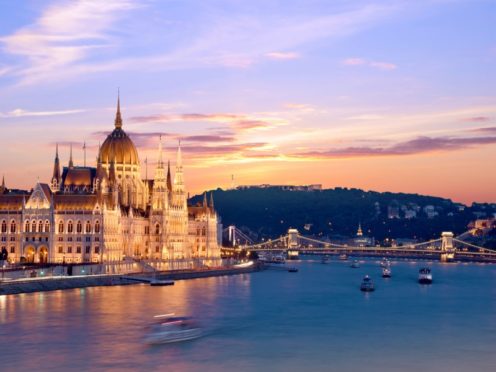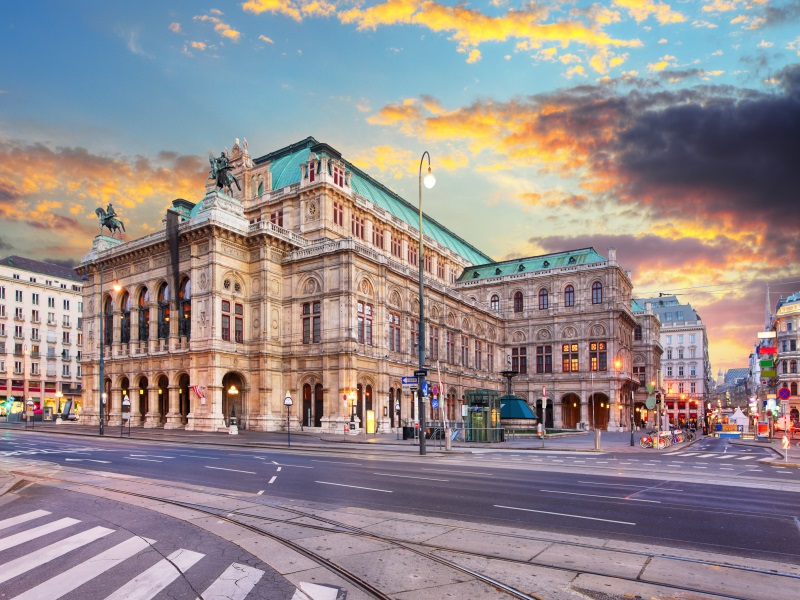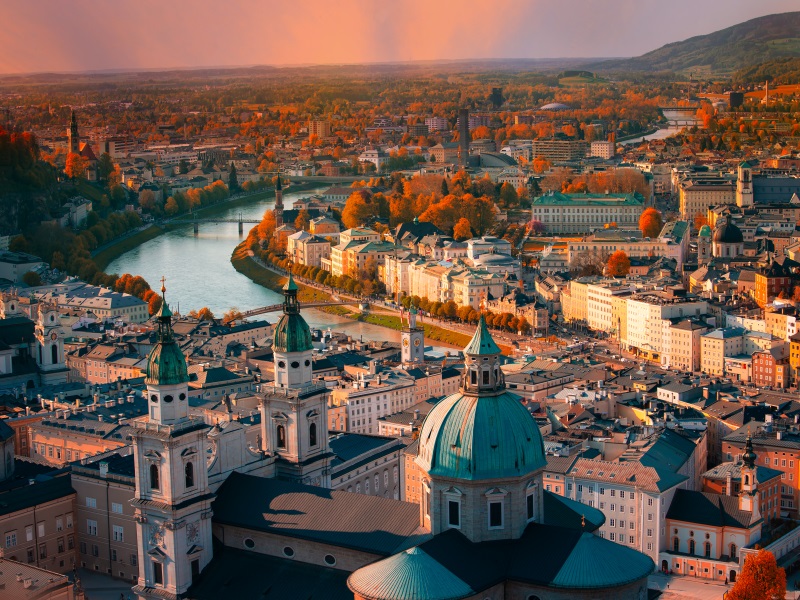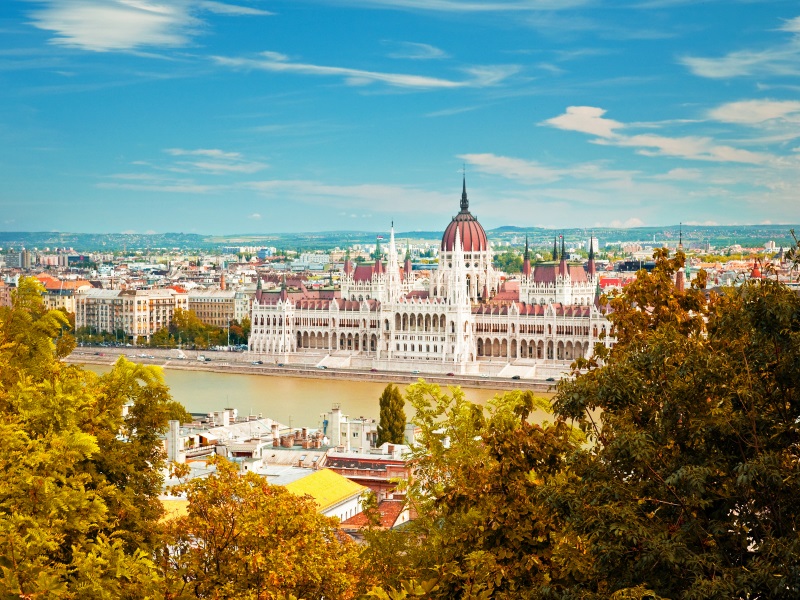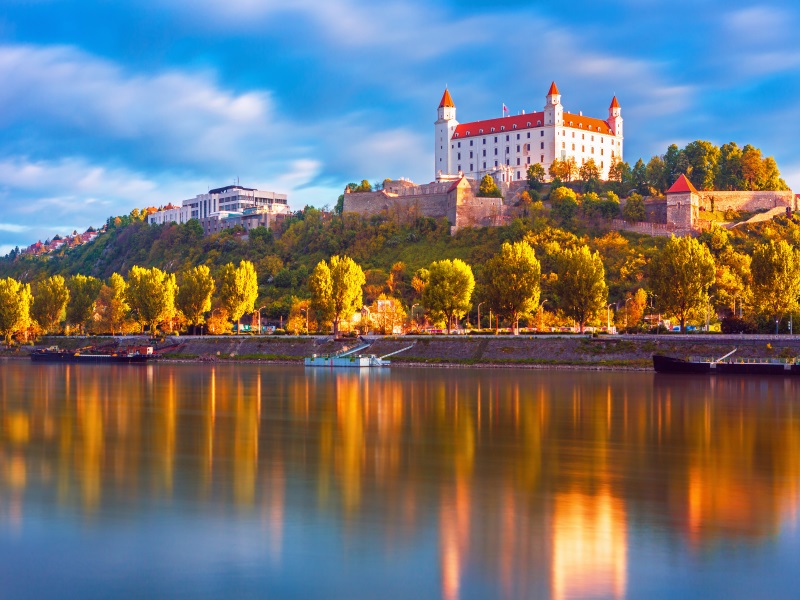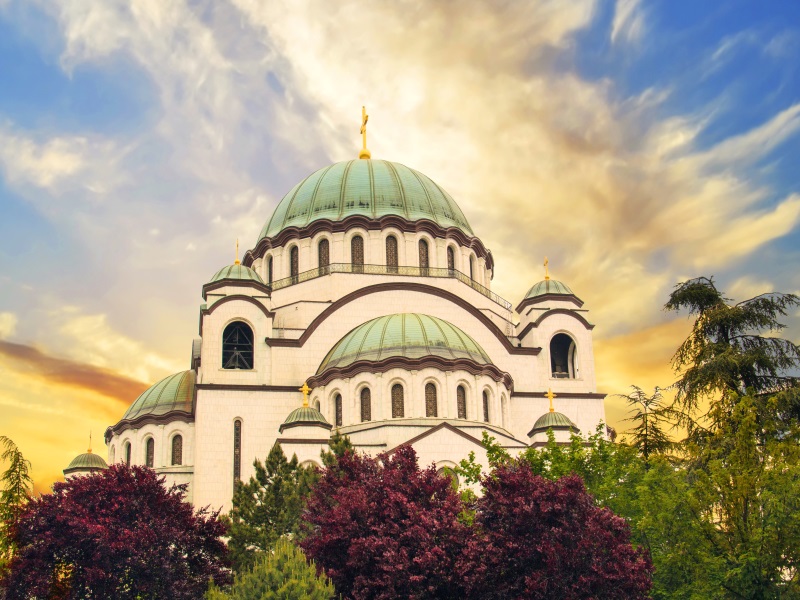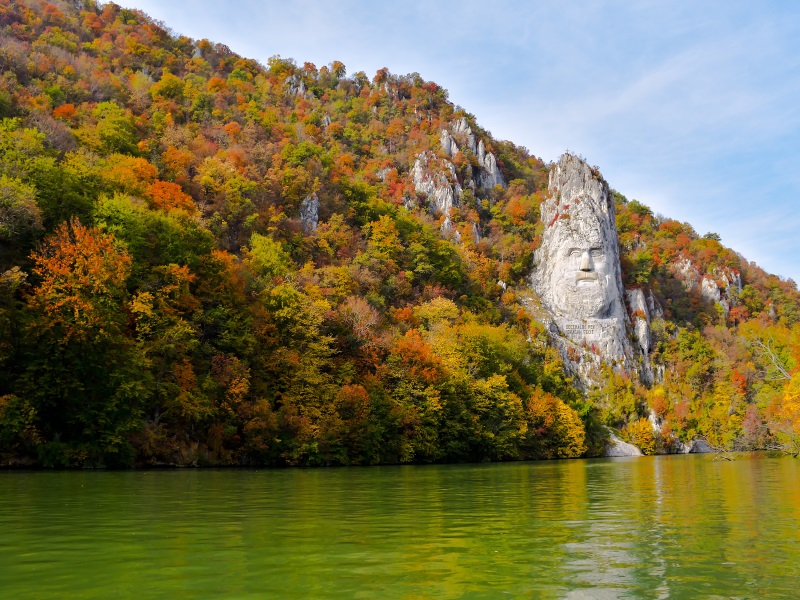Planning for the year ahead, we look at 6 incredible highlights on an autumn Danube river cruise.
The second-longest river in Europe, the Danube flows from the North Sea to the Black Sea through 10 countries.
Cruise its meandering route and you’ll be following in the wake of kings and emperors, sailing past imposing castles, Baroque churches and a wealth of fascinating historic sights.
Four capital cities – Vienna, Budapest, Bratislava and Belgrade – sit on the river and are easily visited on a week-long cruise. Other cities, such as Passau in the foothills of the Bavarian Forest and Dürnstein near the wine-making Wachau Valley, are worth exploring as well.
Embark on a Danube cruise in autumn and, while the river may be blue, the surrounding scenery will be basking in glorious autumnal colours.
From the comfort of your ship or while exploring destinations on cultural excursions ashore, you’ll witness Mother Nature at work, turning the countryside, riverbanks and parks vibrant shades of gold, orange, copper and red.
Visiting the cities on the itinerary of a Danube river cruise are often more pleasant during the autumn months when tourist attractions are not so busy, yet the sun still continues to shine.
Cruises in September and October also coincide with wine harvests and festivals, so if you fancy a glass of chilled white or robust red, you’ve arrived at the right time. Pack some layers for cooler mornings and evenings, and remember it can be chilly when exploring wine cellars.
We’ve taken a closer look at 6 of the golden gems that you’ll encounter on a Danube river cruise.
1. Vienna
A tour around captivating Vienna is a highlight. Waltzing through the city’s wide boulevards, you can visit palaces, galleries and museums.
Its elegant boulevards are a joy to wander along at any time of year, but it’s one of the Danube’s capital cities that becomes ever-more entrancing in autumn, especially if you’re able to while away a few hours in the botanical gardens or vast park at Schönbrunn Palace.
Trees and shrubs will have exchanged their green colour for vivid golden hues – on a sunny day, with a clear blue sky above, it’s a must-see sight.
2. Salzburg
Then there’s Salzburg, the birthplace of Wolfgang Amadeus Mozart.
With a pleasant autumnal temperature of around 20°C in September – and October being the month with the least number of rainy days – the weather is conducive to a spot of sightseeing.
Start your walk in the charming old town or head to Mirabell Palace, where its formal gardens will be seasonally stunning.
3. Budapest
With the autumn temperature still around 23°C in September, it’s an ideal month for visiting Budapest’s many attractions, including Castle Hill, St Stephen’s Basilica and the Hungarian Parliament building.
As it’s easy to explore Budapest by foot, you’ll get the chance to appreciate nature’s seasonal delights in City Park, also the home of the largest natural hot spring spa baths in Europe.
With seemingly endless galleries, museums, spas, and welcoming wine cellars and bars, there is plenty to keep you entertained in Budapest.
If you arrive later in autumn as the weather turns colder, just wrap up and enjoy.
4. Bratislava
Bratislava, the historic Slovakian capital, has a beautifully restored old town with burgher houses and noble palaces, as well as an imposing 17th century castle sitting high above the Danube’s banks.
If in the city on 28 September this year, the White Night contemporary art festival sees Bratislava come alive with dance performances, concerts and plays.
Autumn is also the time when wine grape harvest festivals – events celebrating traditional winemaking – take place. However, don’t worry if you prefer a frothy pint – just arrive for the city’s Oktoberfest to taste the best of the region’s craft beer.
5. Belgrade
Belgrade, the Serbian capital, is a vibrant city with a rich history.
Don’t miss the beautiful domed Temple of Saint Sava – one of the world’s largest Orthodox churches – and the Belgrade fortress; built on a ridge above the confluence of the two rivers (the views are reason enough to visit), the fortress was destroyed and rebuilt many times between the 2nd and 18th centuries.
The complex houses museums and galleries, alongside monuments and memorials.
6. Iron Gates Gorge
As the Danube continues eastwards, so begins one of the most scenic passages of the river: through the Iron Gates Gorge.
Views rarely get more spectacular than here, where dramatic 1,640-feet high limestone cliffs form part of the boundary between Serbia and Romania.
You’ll come face to face with an enormous cliffside carving of the last king of Dacia – it’s definitely a photo opportunity.
